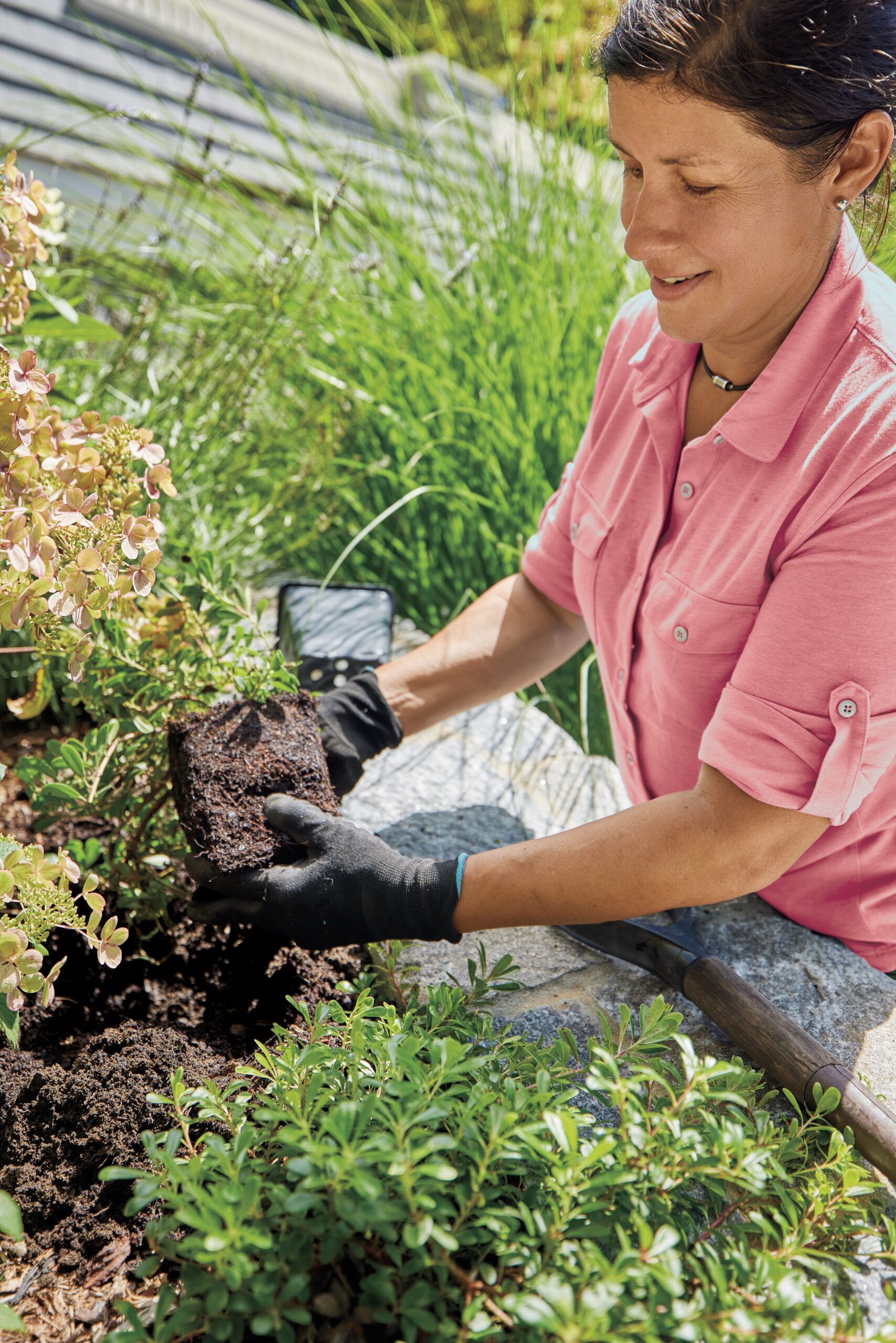We may be compensated if you purchase through links on our website. Our team is committed to delivering honest, objective, and independent reviews on home products and services.
This article appeared in the Summer 2022 issue of This Old House Magazine.
Workhorses in the landscape, groundcovers spread to knit a tight, low-maintenance carpet of foliage that densely covers bare earth. In our guide, we explore creative groundcover combinations to consider for your yard.
What is a Groundcover Plant?
Groundcover plants are typically low-growing, creeping perennials that spread densely across the ground. However, they encompass a diverse range of species, each with unique characteristics and growth habits. These plants typically feature horizontal stems, either above or below the soil, that extend in all directions, rooting and sprouting new shoots as they grow. Familiar examples include periwinkle and pachysandra.
However, groundcovers aren’t limited to just low-growing species. Taller clumping perennials, such as hostas and certain ferns, also fulfill this role. These plants expand more gradually, increasing in width year by year. Consider flowering perennials that form dense, substantial stands, such as lady’s mantle, epimediums, and coral bells.
Not just pleasing to look at, they serve a number of practical purposes as well. “Groundcovers can stabilize the soil, help it retain moisture, and prevent weeds from taking hold,” says This Old House landscape contractor Jenn Nawada, who prefers them to mulch where she knows they will thrive.
And while there are times when filling a bare spot with a swath of a single plant provides a welcome rest for the eye, she loves the idea of combining two or more species for a pleasing mix of foliage shape, color, and texture, turning groundcovers into a design tool rather than just a backdrop.
Choosing the Right Groundcover Plants
When selecting groundcovers, consider their foliage texture, leaf color, and sheen, as these plants are primarily grown for their foliage rather than their flowers. For instance, the fuzzy silver leaves of lamb’s ears create a striking contrast against the rounded, shiny deep-green leaves of European wild ginger. If you’re interested in incorporating flowering groundcovers, consider combining species with different bloom times for a succession of color throughout the growing season.
It’s important to note that spreading groundcovers tend to be more aggressive than clumping varieties and may outcompete them over time. When pairing two spreading species, you may need to manage their growth by removing sections periodically to maintain balance. Before planting, we recommend checking the database at invasive.org to see if the chosen plants are not invasive in your area.
Groundcover Combinations To Consider for Your Yard
From full-sun groundcovers to those made for the shade, there are plenty of options to consider no matter how much sun your yard receives during the day. Below are some of the most common options and groundcover combinations to consider for your yard.
Sun-Seeking Groundcover Plants
Full-sun groundcovers thrive in areas that receive at least six hours of direct sunlight daily, preferably strong afternoon light. These plants are best for brightening up open spaces and adding vibrant color to your landscape.
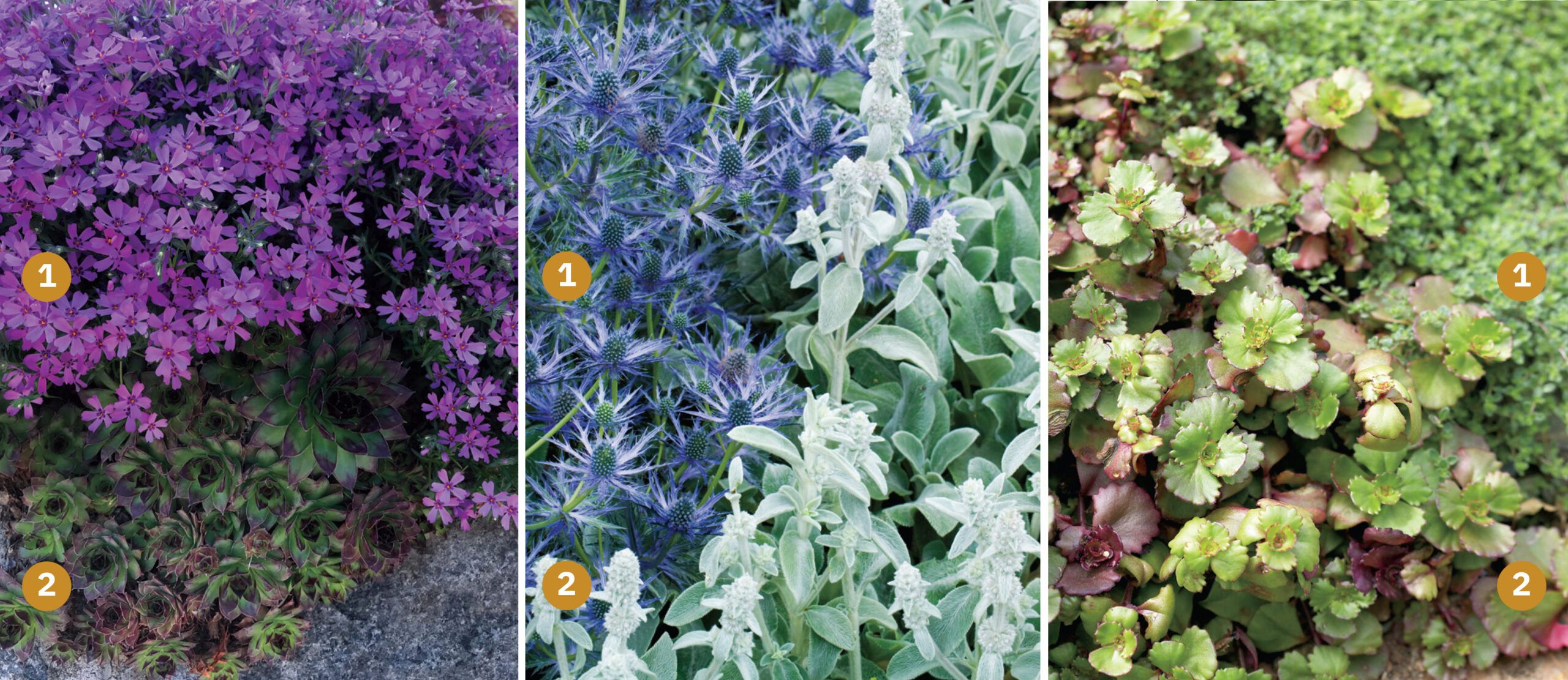
Left:
- Creeping phlox (Phlox subulata cvs.): Grows up to 6 inches high and 24 inches wide in Zones 3–8
- Hens and chicks (Sempervivum tectorum cvs.): Grows up to 6 inches high and 12 inches wide in Zones 4–8
Why they pair well: These heat-loving creepers are both tough and beautiful, making them ideal for rocky crevices and sunny spots. Creeping phlox produces brilliant pink blooms in early spring, followed by a dense mat of feathery medium-green foliage. This creates a stunning contrast with the fleshy, red-tinged rosettes of hens and chicks.
Middle:
- Sea holly (Eryngium x zabelii): A clump-forming perennial or biennial, it grows up to 24 inches high and 24 inches wide in Zones 5–8
- Lamb’s ears (Stachys byzantina): A creeping perennial, it grows up to 18 inches high and 24 inches wide in Zones 4–8
Why they pair well: Both plants thrive in full sun and well-drained soil. The silvery, fuzzy-leaved lamb’s ears spreads moderately and complements the spiky-looking sea holly without overwhelming it. The contrast in textures is dramatic, but the plants’ cool colors are soothing on a hot summer day.
Right:
- Woolly thyme (Thymus pseudolanuginosus): Grows up to 3 inches high and 18 inches wide in Zones 5–8
- ‘Dragon’s Blood’ sedum (Sedum spurium ‘Dragon’s Blood’): Grows up to 6 inches high and 24 inches wide in Zones 4–9
Why they pair well: These low-growing creepers are good choices for the edges of beds near sun-drenched walkways. Woolly thyme blooms with delicate pink flowers in late spring to early summer, while ‘Dragon’s Blood’ sedum produces deep red flowers later in the season. The sedum’s frilled green-to-burgundy foliage provides an interesting counterpoint to the thyme’s tiny, velvety green leaves.
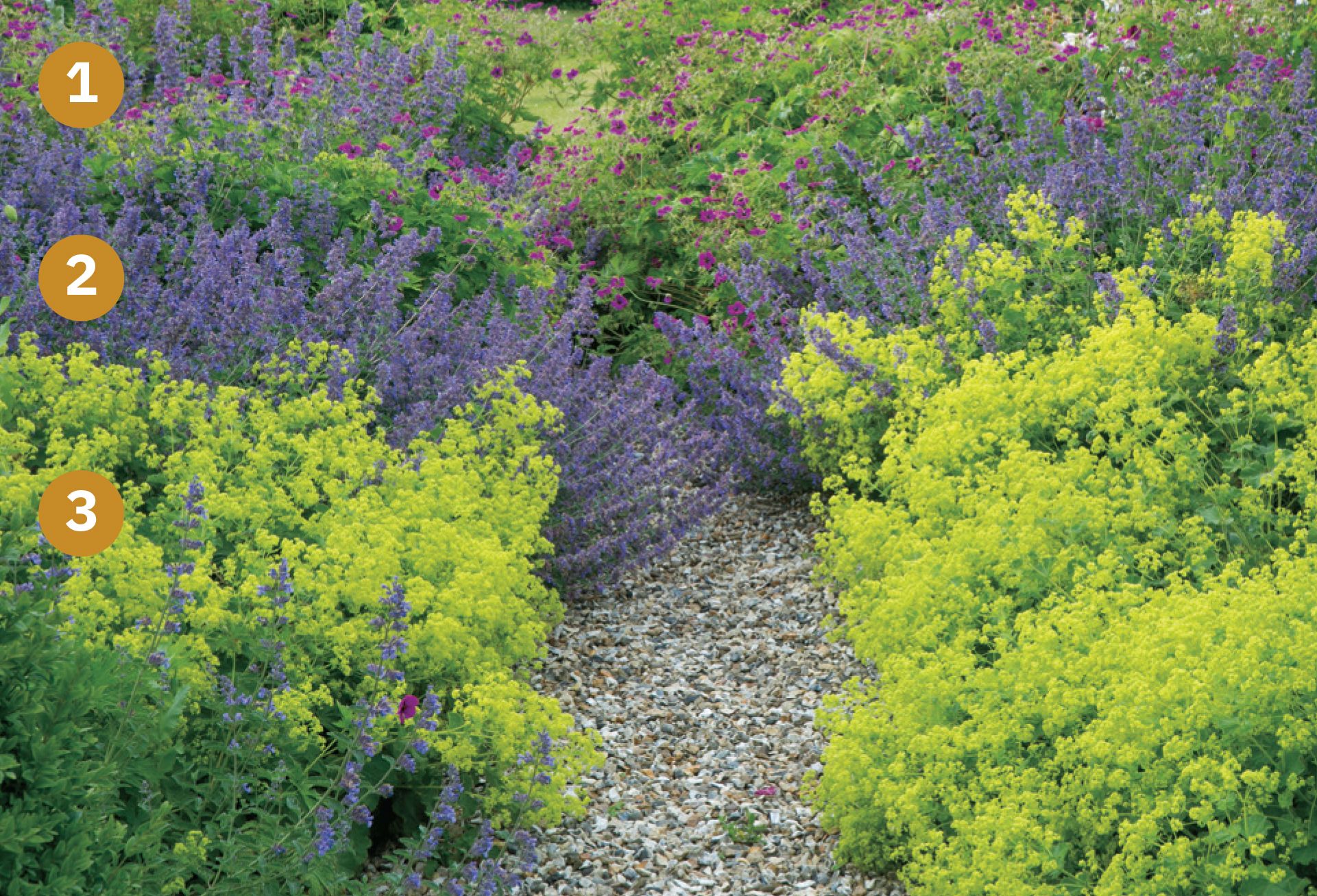
- Cranesbill (Geranium x cantabrigiense): A creeping perennial that grows up to 12 inches high and 24 inches wide in Zones 5–8
- Catmint (Nepeta x faassenii): Has small, fuzzy gray-green leaves; it grows in clumps up to 24 inches high and 36 inches wide in Zones 4–8
- Lady’s mantle (Alchemilla mollis): A clumping perennial with broad scalloped leaves; it grows up to 24 inches high and 30 inches wide in Zones 4–7
Why they pair well: These three plants create a spectacular display when they bloom simultaneously in early summer, as shown in the image. Each continues to bloom sporadically throughout the season. All three are adaptable and can tolerate both sun and partial shade. Even when not in bloom, their foliage offers a perfect mix of mounded textures.
Plants That Are Made for Shade
Partial- or full-shade plants prefer no more than three to six hours of sun, ideally weak morning light. These groundcovers are best for areas under trees or on the north side of buildings where there’s limited sunlight.

Left:
- Common periwinkle (Vinca minor): Grows 4-8 inches high and indefinitely wide in Zones 4–9
- ‘Catlin’s Giant’ bugleweed (Ajuga reptans ‘Catlin’s Giant’): Grows up to 6 inches high and indefinitely wide in Zones 3–9
Why they pair well: This combination thrives in challenging conditions. Both prefer partial to full shade and can adapt to various soil types. They’re excellent choices for covering slopes where grass won’t grow. These strong spreaders will compete for space, especially with some sunlight, resulting in more blue flowers. However, vinca is invasive in parts of the eastern United States, so take care to prevent it from spreading into open woodland areas.
Middle:
- Hosta (Hosta cvs.): Comes in a large range of sizes and shades of green and thrives in Zones 3–8
- Bunchberry (Cornus canadensis): Grows up to 9 inches high and indefinitely wide in Zones 2–7
Why they pair well: Both plants prefer full shade and moist, well-drained soil. Bunchberry, a native and slow-growing creeping dogwood, forms an attractive carpet beneath virtually any hosta variety. The plants’ leaves have similar shapes and grooves for textural harmony. The dogwood’s white flowers add a bright accent in late spring, which complements the hostas’ foliage.
Right:
- ‘Big Blue’ lilyturf (Liriope muscari ‘Big Blue’): Grows up to 12 inches high and 18 inches wide in Zones 6–10
- Autumn fern (Dryopteris erythrosora): Slowly grows up to 2 feet high and wide in Zones 6–9
Why they pair well: These shade-loving plants thrive in partial to full shade and moist, fertile, well-drained soil. Lilyturf is a popular choice for its clean, grassy texture and long-lasting spikes of blue or purple flowers in late summer to fall. Adding a contrasting splash of color, such as the bright green autumn fern, sets off its color even more.
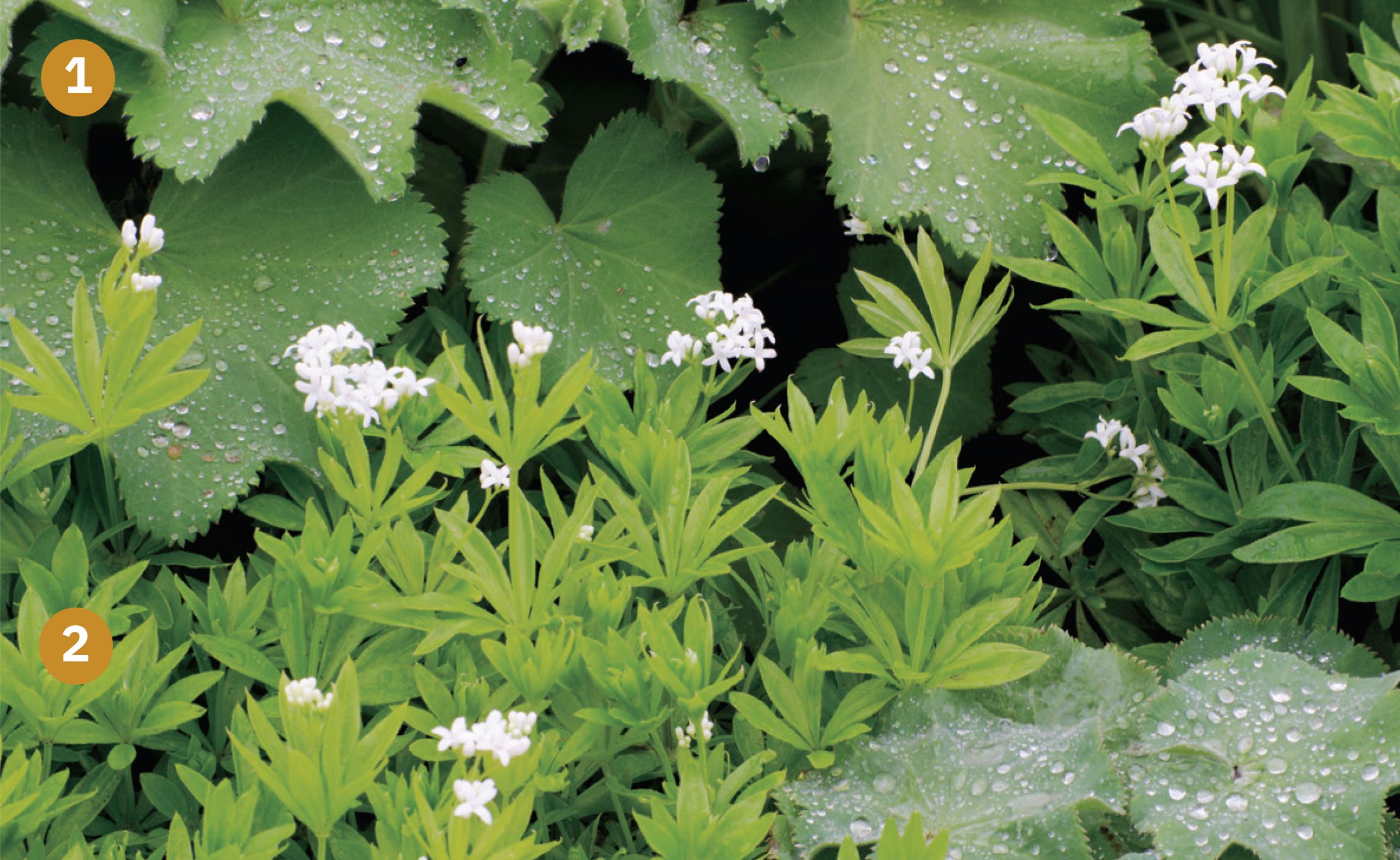
- Lady’s mantle (Alchemilla mollis): Grows up to 24 inches high and 30 inches wide in Zones 4–7
- Sweet woodruff (Galium odoratum): Grows 6-12 inches tall and indefinitely wide in Zones 5–8
Why they pair well: Both plants thrive in partial shade and rich, moist, well-drained soil but can also tolerate indirect sun. Sweet woodruff, a creeping perennial, produces delicate whorls of emerald-green foliage topped with tiny, starry white flowers in spring. This complements the larger, pale green, scalloped round leaves of lady’s mantle, a clumping perennial that produces tiny chartreuse flowers in summer after the sweet woodruff’s flowers have faded away.
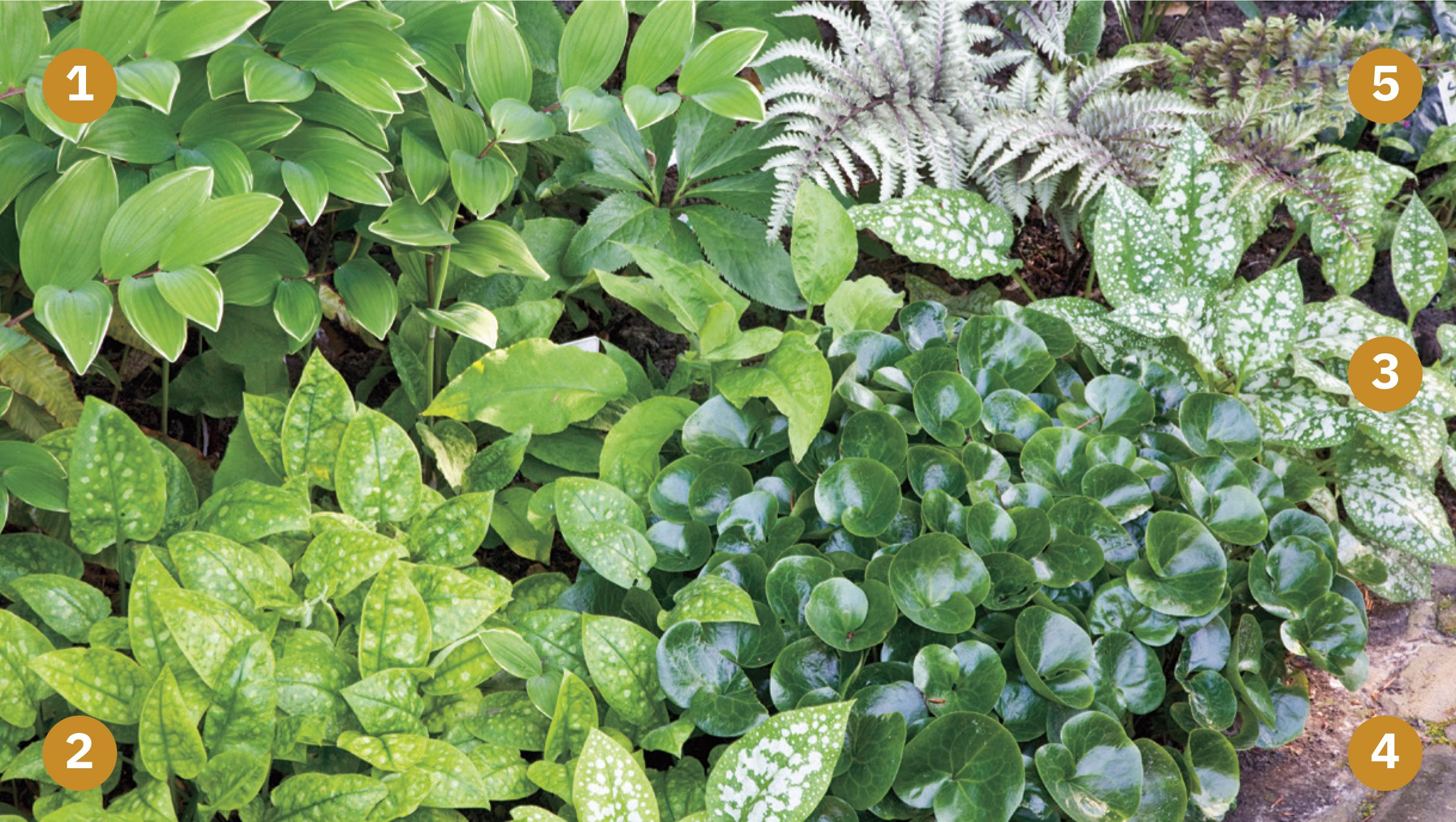
- Variegated Solomon’s seal (Polygonatum odoratum ‘Variegatum’): Grows up to 36 inches high and indefinitely wide in Zones 4–8
- Lungworts (Pulmonaria cvs.): Grow up to 18 inches high and 24 inches wide in Zones 3–8
- European wild ginger (Asarum europaeum): Grows up to 6 inches high and 18 inches wide in Zones 4–8
- Japanese painted fern (Athyrium niponicum var. pictum ‘Metallicum’): Slowly grows 8-12 inches high and indefinitely wide in Zones 5–8
Why they pair well: These classic shade perennials offer a diverse range of hues, from bright chartreuse to glossy deep, dark greens. Their interesting variegation and variety of leaf shapes and forms create a harmonious groundcover combination.

- Common Solomon’s seal (Polygonatum x hybridum): Grows up to 3 feet high and indefinitely wide in Zones 6–9
- Barrenworts (Epimedium x versicolor cvs.): Grow up to 12 inches high and 18 inches wide in Zones 5–9
Why they pair well: Epimediums are spreading woodland perennials that produce delicate, spidery spring flowers in various colors. Their dense, cascading foliage ranges from pale green to burgundy, with numerous variations in between. This foliage remains evergreen except during the harshest winters. Pairing them with the arching stems and dangling white spring flowers of Solomon’s seal, another spreader, adds vertical interest and creates a layered, naturalistic groundcover combination.
Tips for Planting Groundcover
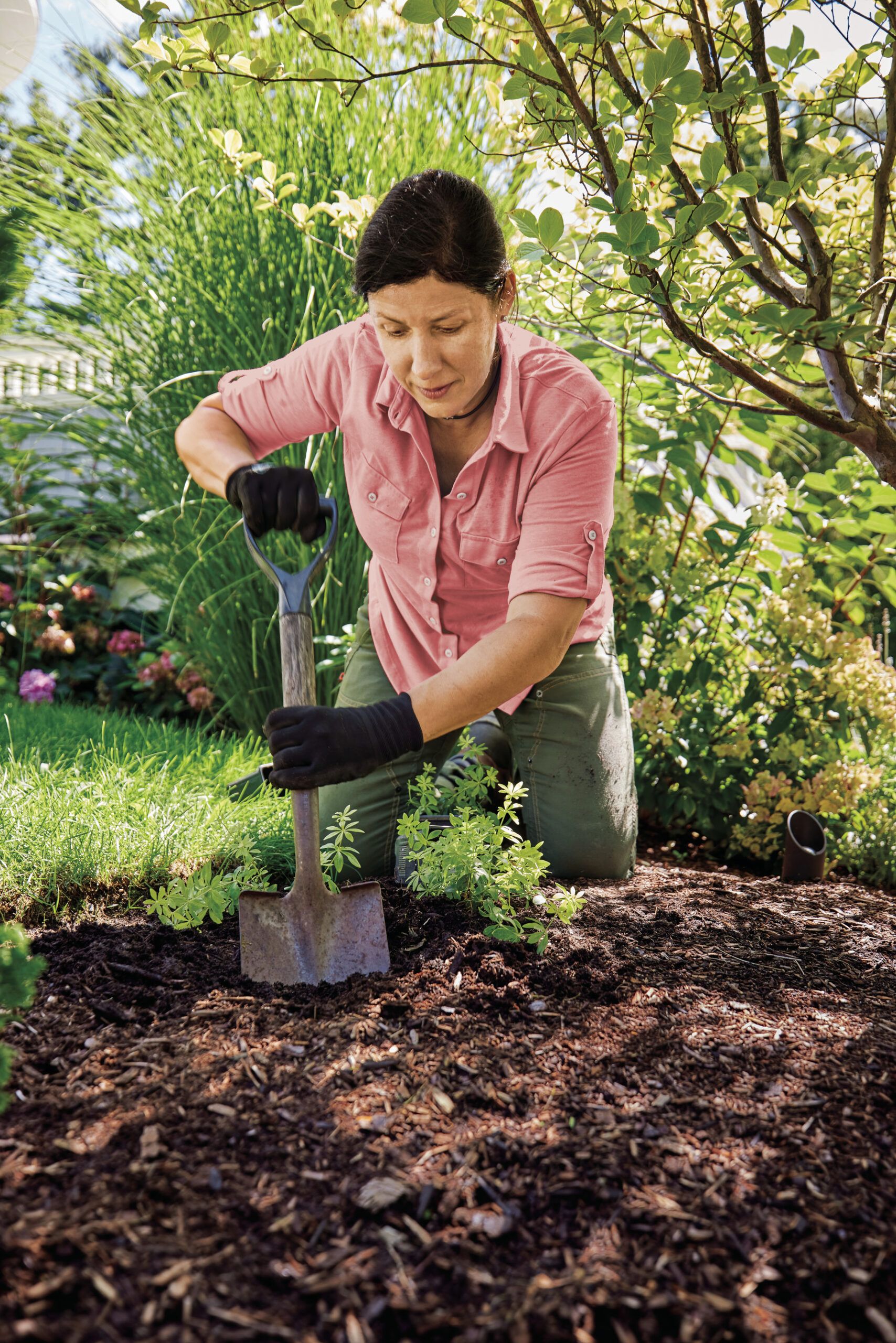
Consider these tips when planting your groundcover combinations.
Plan Your Groundcover Plant Layout
When planning your groundcover layout, consider three key factors—the plant’s ultimate size, its growth rate, and your patience level. For example, European wild ginger spreads to 18 inches wide but grows relatively slowly. If you desire quicker coverage, you might want to plant it every 12 inches. On the other hand, bugleweed is an aggressive spreader, so spacing these plants farther apart is acceptable and can save you money. As Nawada advises, “Don’t go for immediate gratification. Space them out and let them fill in.”
Prepare the Soil
Proper soil preparation gives your groundcovers a strong start, regardless of their spacing. Begin by turning over the soil and removing any weeds and their roots. Smooth out the area and lay out the plants in a grid pattern until you achieve the desired spacing. Once satisfied with the arrangement, plant the groundcovers and water them well.
Give Plants a Good Start
Newly planted groundcovers require some initial care to become the low-maintenance workhorses they’re known to be. Water them regularly and provide occasional fertilization to help establish strong root systems. Be diligent about weeding between the plants during this establishment period.
Maintaining Your Groundcover Combinations
To ensure your groundcover combinations thrive in your outdoor space, follow these maintenance tips:
- Mulch: Apply a thin layer of organic mulch around newly planted groundcovers to help retain moisture and suppress weeds.
- Prune: Trim back any overgrown areas to maintain the desired shape and prevent aggressive spreaders from overtaking slower-growing plants.
- Divide: Every few years, divide clumping groundcovers to rejuvenate them and maintain their vigor.
- Monitor: Keep an eye out for signs of pests or diseases, and address any issues promptly to prevent them from spreading.
- Water: While established groundcovers are often drought-tolerant, provide supplemental water during extended dry periods.
Our Conclusion
Groundcovers are a low-maintenance option that can stabilize your yard’s soil while helping it retain moisture and prevent weeds from taking over. The right groundcover combinations for your yard also provide a mix of colors, textures, and shapes. Before planting your groundcovers, we recommend verifying that the plant isn’t an invasive species in your area.
